1. Space Tourism in the 1990s
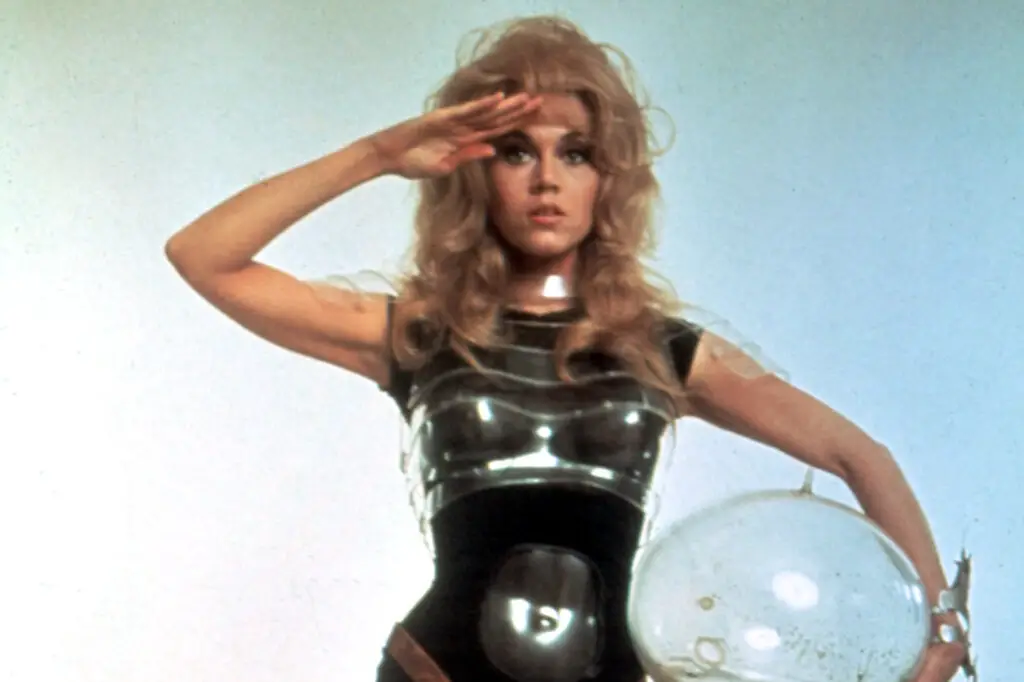
By the late ’80s, there were predictions that space tourism would be a booming industry by the 1990s. Experts envisioned a world where ordinary people, not just astronauts, could take vacations in space. Space stations would offer zero-gravity experiences, and private companies would offer suborbital flights for a hefty price tag. People dreamed of gazing down at Earth from space, taking leisurely strolls on the Moon, or enjoying an out-of-this-world hotel stay. Space travel seemed poised to be the ultimate luxury experience for the elite.
In reality, space tourism has taken much longer to materialize. While companies like SpaceX and Blue Origin are paving the way for commercial spaceflight, it’s still a rare and expensive venture. The cost of space travel remains prohibitively high, and the infrastructure needed to support widespread tourism is still in its infancy. While there are plans for space tourism to become more accessible in the future, it hasn’t quite taken off as quickly as many had hoped. For now, space remains an exclusive destination for astronauts and a select few wealthy individuals.
2. Flying Cars by the 21st Century
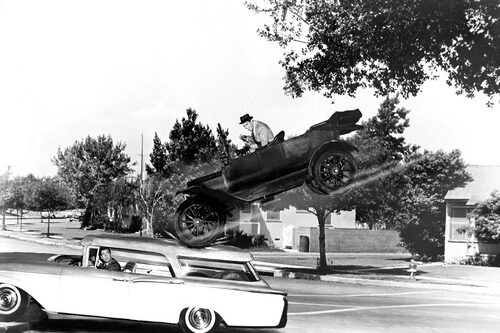
Back in the ’50s, the idea of flying cars was everywhere, from futuristic movie sets to automotive conventions. Visionaries predicted that by the year 2000, we’d be zipping around in personal flying machines, bypassing the mundane traffic jams that plague our daily commutes. The concept of flying cars seemed like a given, with companies like Ford even showcasing prototype designs for sky-bound vehicles. A world where anyone could take to the skies on a whim appeared imminent, driven by the advancements in aviation technology. People imagined flying cars as sleek, self-piloting contraptions that could navigate the airspace just as easily as they would the roads says American Enterprise Institute.
But here we are, still stuck in traffic. While the dream of flying cars hasn’t entirely fizzled out, we have yet to see them in any practical, mass-produced form. The reality of creating a vehicle that can safely lift off the ground, navigate airspace, and land in urban environments is far more complex than anticipated. Factors like air traffic control, safety, and engineering challenges are just a few of the hurdles that have kept flying cars grounded. Today, while companies continue to experiment with prototypes, the notion that we’d all be flying by now has proven to be overly ambitious. The future of transportation may involve advanced drones or electric vehicles, but personal flying cars? They’re still in the realm of science fiction.
3. Robots Taking Over All Jobs
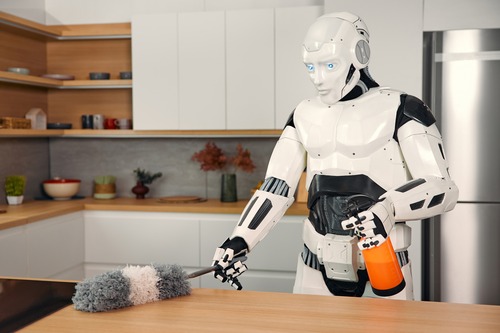
In the mid-20th century, many experts believed that robots would have fully taken over all manual labor by the year 2000. The predictions were clear: as technology advanced, robots would take on factory work, office tasks, and even service roles, leaving humans free to pursue leisure activities. With advancements in automation and artificial intelligence, it seemed like the dawn of a world where humans no longer had to work for a living was just around the corner. People envisioned a utopian future, with robots handling all the mundane tasks, allowing society to shift its focus to creativity and intellectual pursuits explains BBC.
Fast forward to today, and while automation has certainly transformed industries, we haven’t seen robots replacing all human jobs just yet. In fact, while robots have taken over many repetitive and labor-intensive jobs, new job categories have emerged to handle the tasks that machines can’t do, such as creative, emotional, or complex problem-solving work. The reality is that while robots are making waves in manufacturing, service industries, and even healthcare, many jobs still require a human touch. From emotional intelligence to adaptability, there are countless human traits that robots just can’t replicate. The workforce has evolved alongside technology, but the vision of an entirely robot-run society has yet to become a reality adds Bentley University.
4. Moon Bases by the 1980s

The space race of the ’60s and ’70s fueled expectations that humanity would have permanent bases on the Moon by the 1980s. The lunar landings captured the public’s imagination, and many believed that we would follow up with colonies on the Moon in no time. Predictions ranged from scientific research outposts to entire colonies that would serve as stepping stones for further exploration of space. With the Apollo missions as proof that human space travel was possible, it seemed inevitable that lunar bases would be established within a few decades. People envisioned bustling moon bases with astronauts conducting experiments, mining lunar resources, and even living there for extended periods says Nature.
As we now know, that ambitious timeline didn’t quite pan out. While the Moon has been visited by astronauts, the idea of establishing permanent human settlements there is far more complicated than predicted. The cost of building and maintaining lunar bases, combined with the dangers of radiation and the Moon’s harsh environment, has made this goal elusive. Space agencies have since shifted focus to missions like Mars exploration and robotic probes, while the Moon remains an occasional destination for astronauts. The dream of a Moon base isn’t dead, but it certainly won’t be realized on the schedule many imagined back in the day continues CNN.
5. Personal Jetpacks for Everyone

One of the most exciting predictions from the ’60s and ’70s was that personal jetpacks would become commonplace by the early 21st century. People pictured themselves effortlessly soaring through the air, dodging traffic, and zipping between work and home with just the push of a button. Movies and TV shows like The Jetsons fueled the idea that jetpacks would be part of our everyday life, making the dream of personal flight something to look forward to. The technology seemed to be just around the corner, and many believed that it wouldn’t take much longer for jetpacks to take off.
Today, we have seen some progress in the development of personal jetpacks, but they’re still far from the daily-use devices people envisioned. The reality is that while small-scale jetpacks exist, they remain impractical for everyday use. They require significant fuel, pose serious safety concerns, and are often limited to very short flight durations. Even with advancements in materials and technology, the challenges of creating a stable, user-friendly jetpack that can be widely used are immense. While jetpacks may one day be a reality, we’re still waiting for them to make the leap from novelty to mainstream.
6. 3-Day Work Week

In the ’60s, some economists predicted that by the year 2000, technological advancements would be so advanced that we’d only need to work three days a week. They argued that as automation and machines took over most of the labor, humans would have more leisure time. People were excited about the prospect of a shorter workweek, anticipating that technological efficiency would allow us to do more in less time. It seemed like a bright future where people could spend more time with family, pursue hobbies, or relax without the constant pressure of work.
However, that prediction has yet to materialize. Instead of a dramatic reduction in work hours, most people find themselves working longer hours, with the constant connectivity of technology keeping them tethered to their jobs. While automation has indeed made certain tasks easier and more efficient, the anticipated workweek reduction hasn’t come to fruition. Instead, work culture has evolved with an expectation of constant productivity, even as technology advances. The dream of a 3-day workweek is far from reality, with many still struggling to achieve a better work-life balance.
7. Paperless Offices by 2000

In the late ’90s, the rise of digital technology led many to believe that offices would be completely paperless by the year 2000. With the widespread use of email, digital documents, and cloud storage, it seemed inevitable that paper would become obsolete. People imagined a world where every document, memo, and contract was stored digitally, eliminating the need for paper altogether. Companies even started going paperless in their marketing campaigns, touting the environmental benefits and cost savings of digital-only communication.
Yet, we’re still surrounded by paper. While digital technology has certainly reduced the reliance on paper in many industries, it hasn’t eliminated it entirely. Printing, forms, invoices, and paperwork still persist, particularly in industries like law, healthcare, and government. In fact, some industries have seen paper usage increase as a result of legal and regulatory requirements. The promise of a completely paperless world has proven to be a bit too optimistic, as digital technology hasn’t fully replaced the physical paperwork that continues to be an essential part of many sectors.
8. Teleportation in the 21st Century

The idea of teleportation—instantaneously transporting objects or people from one place to another—has long been a staple of science fiction. In the ’60s and ’70s, many experts believed that by the early 21st century, we would have mastered the science of teleportation, revolutionizing travel and communication. Imagine stepping into a machine and arriving on the other side of the world in a matter of seconds. Teleportation was envisioned as the ultimate solution to transportation, with no need for planes, trains, or automobiles.
However, teleportation remains firmly in the realm of fiction. While quantum physics has shown that particles can be “teleported” on a very small scale (a phenomenon known as quantum entanglement), the idea of teleporting humans or large objects remains far beyond our capabilities. The complexities of how matter is transported, the potential risks, and the enormous energy required for such a feat make teleportation a distant dream. Despite the advances in quantum computing and physics, it seems unlikely that teleportation will be a practical reality in the near future.
9. The End of the Nuclear Family

In the mid-20th century, sociologists predicted that the nuclear family—a household consisting of two parents and their children—was on the verge of extinction. They believed that societal shifts, such as the rise of feminism, increasing divorce rates, and changes in economic structures, would lead to a breakdown in the traditional family model. With the growing acceptance of alternative family structures, such as single-parent homes and communal living, the idea was that the nuclear family would no longer be the dominant household form by the turn of the century.
While family structures have certainly evolved, the nuclear family is still a prevalent model in many parts of the world. Although more diverse family structures have emerged, such as single-parent homes, blended families, and same-sex parent households, the nuclear family hasn’t disappeared. In fact, the concept of the nuclear family continues to be a dominant cultural ideal in many societies, even as family dynamics become more varied and flexible. The prediction that the nuclear family would become obsolete has proven to be an oversimplification of social change.
10. The Paperless Newspaper

In the early days of the internet, many experts predicted that print newspapers would be completely obsolete by the 21st century. The rise of digital media seemed to signal the end of the traditional newspaper, with online articles and blogs taking over as the primary sources of news. People foresaw a world where news would be delivered straight to our screens, and print editions of newspapers would vanish from the shelves. The thought was that digital publications would dominate, and physical newspapers would be relics of the past.
Yet, print newspapers are still with us today, albeit in a more niche capacity. While digital media has transformed the way we consume news, print publications haven’t disappeared entirely. Many newspapers have transitioned to digital formats, but print editions continue to exist, especially for older audiences and regions with limited internet access. The prediction that paper newspapers would fade away completely hasn’t come true, and while the industry has certainly evolved, print journalism is far from extinct.
11. Computers Smaller Than a Grain of Rice

In the ’70s, futurists predicted that by the turn of the century, computers would shrink to the size of a grain of rice. The idea was that advancements in miniaturization and semiconductor technology would lead to computers so small that they could be embedded in anything—from clothing to everyday objects. People imagined a future where everyone had a personal computer in their pocket or even inside their bodies, seamlessly interacting with the world. The concept of minuscule computers became a popular vision of the future.
In reality, computers have certainly gotten smaller, but the idea of them being the size of a grain of rice is far from achievable. While we have smartphones and wearables that pack incredible computing power into compact forms, the miniaturization of computer components faces significant challenges. The limits of physical space, heat dissipation, and power consumption make it unlikely that we’ll see a computer smaller than a grain of rice anytime soon. While we’re closer to having computers integrated into everything we use, they still require a certain level of size and infrastructure to function properly.
12. All Books Will Be Digital

In the early 2000s, many predicted that by now, traditional printed books would be replaced by digital versions. The rise of e-readers like the Kindle and the proliferation of digital books seemed to signal the death of paperbacks and hardcovers. People envisioned a world where libraries, bookstores, and publishing houses would all go digital, offering an endless supply of books without the environmental impact or logistical concerns of physical printing. E-books were poised to take over, with everyone reading on screens rather than turning pages.
While digital books have certainly gained traction, printed books have not disappeared. In fact, the resurgence of interest in physical books, especially in the form of collectors’ editions, has proven that the tactile experience of holding a book still holds strong appeal. The convenience of e-books and audiobooks has changed the reading landscape, but it hasn’t completely displaced print. While digital formats are more convenient for many, the printed book continues to endure as a beloved format, with many readers still preferring the feel of paper and the aesthetic of physical libraries.
13. A Fully Automated Home
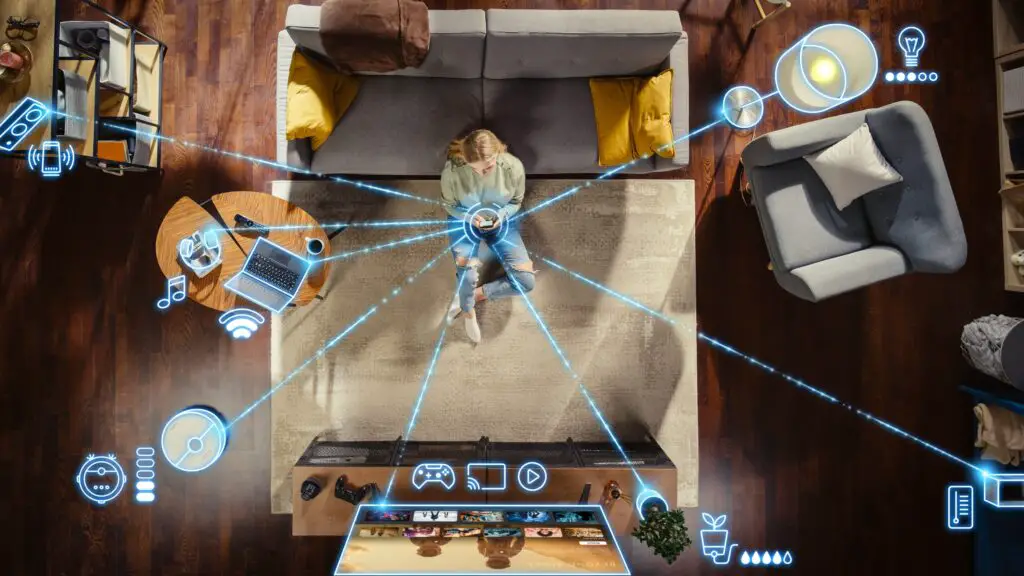
In the late ’90s, it was predicted that by the 2000s, homes would be completely automated. Imagine homes that would manage your heating, lighting, and even grocery shopping, all from a central control system. The idea was that technology would integrate seamlessly into every aspect of daily life, making everything from cooking to cleaning an automatic process. People thought that home automation would be a breeze, with smart appliances, automated cleaning systems, and digital assistants running everything smoothly.
Today, while smart homes are certainly a reality, they are far from the fully automated systems that were once envisioned. Smart thermostats, voice-activated assistants, and automated lighting have become commonplace, but fully automated homes that handle everything from meal preparation to laundry still don’t exist. Automation is still in its infancy, with many tasks requiring human input and oversight. The dream of a completely automated home where everything runs on its own is still something we’re working toward, but it’s not quite the seamless experience many expected by now.
14. Virtual Reality for Education
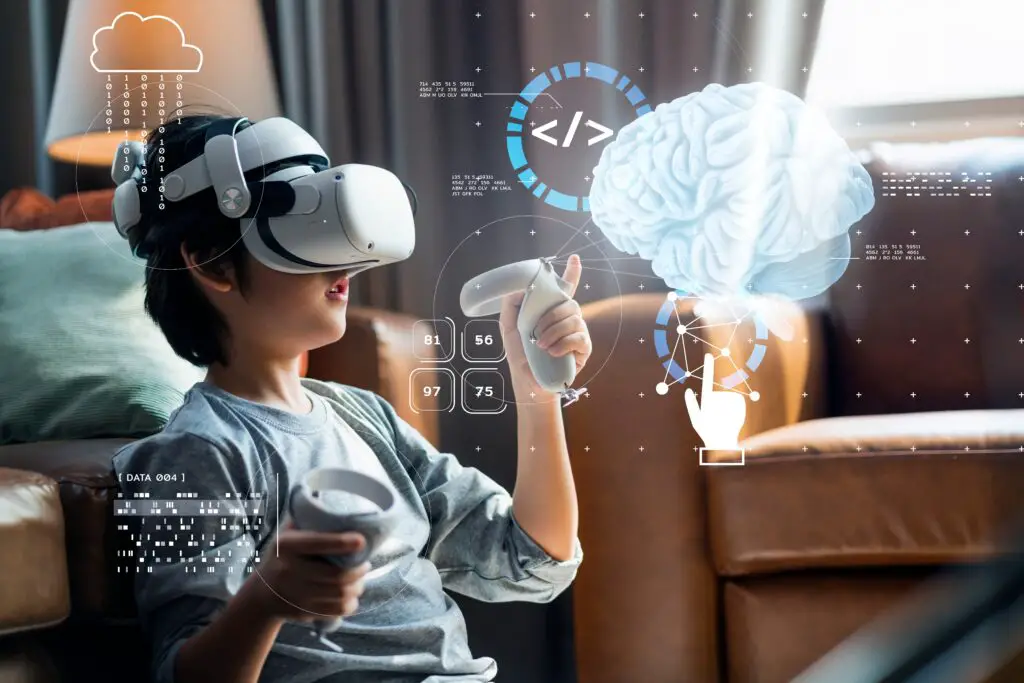
In the ’90s, there was widespread belief that by the 2000s, virtual reality (VR) would revolutionize education. The concept was that VR would allow students to experience historical events, travel through the human body, or explore the solar system in a fully immersive environment. This vision of education would eliminate the need for textbooks and classrooms, with students learning through interactive simulations that would be more engaging and effective than traditional methods. The potential for VR in education seemed limitless, with predictions that it would become a common tool in schools and universities.
While VR has certainly found its place in certain educational contexts, it hasn’t become the standard learning tool that was once imagined. Although VR is used in some specialized fields like medicine and engineering, the cost and complexity of setting up immersive learning environments have made it impractical for widespread use. Many schools are still focused on more traditional teaching methods, with VR still being seen as a novelty rather than a core part of education. While VR may continue to grow in educational applications, it’s not yet the revolutionary tool that many predicted it would be.
